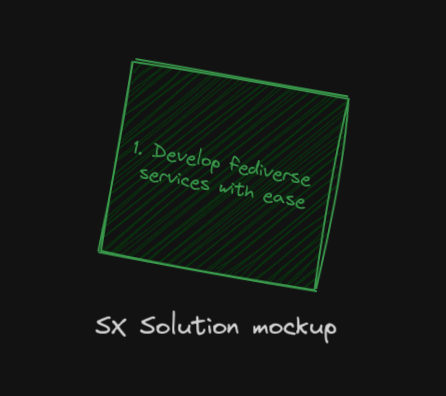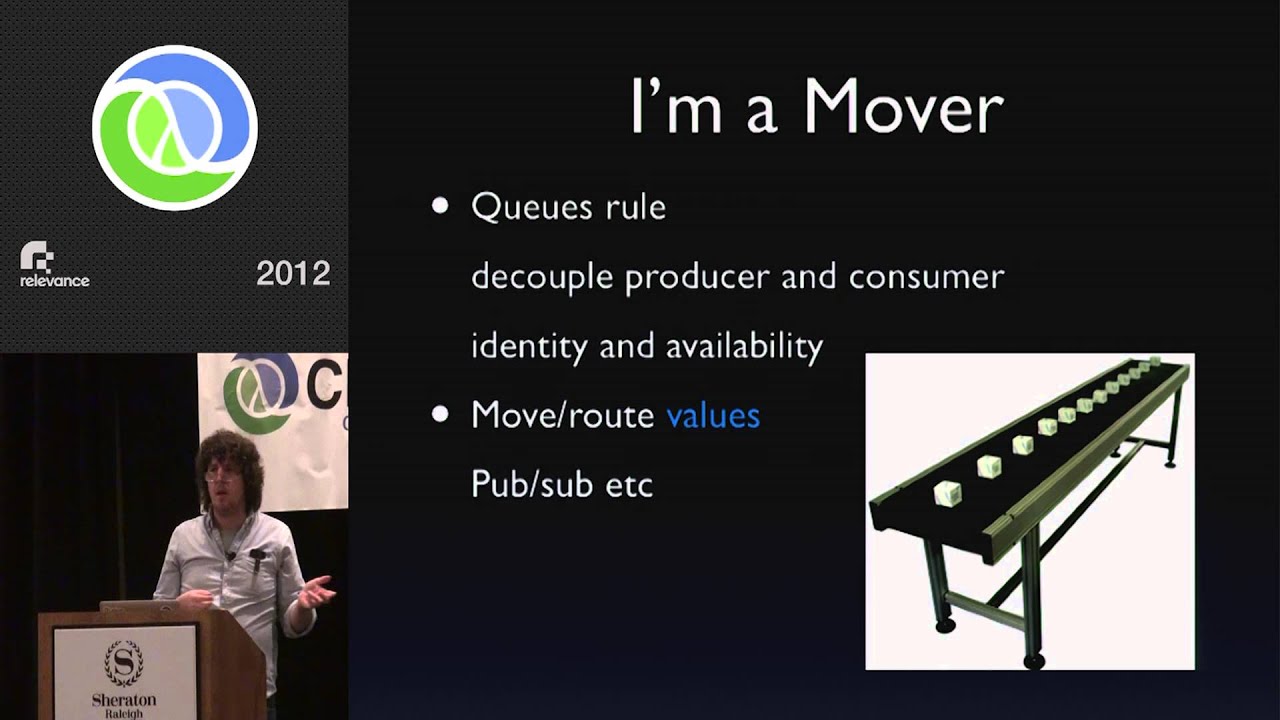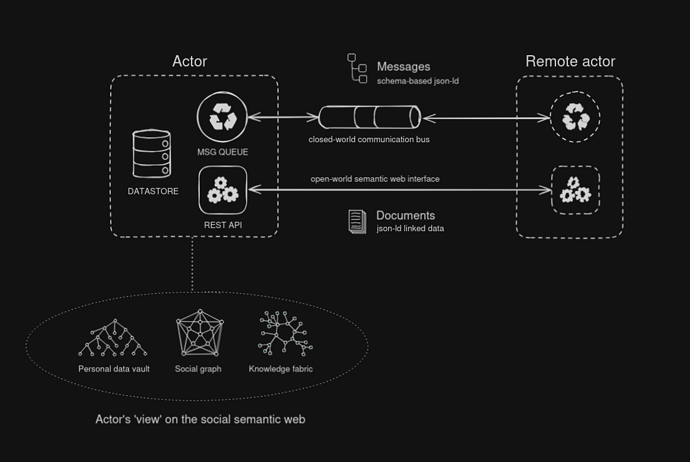You are right. These are just the notes I took on the basis of earlier chat.
Though to kick this off, I think the start will be quite technical, just to lay out the overall direction, high-level architecture and protocol design decisions, and such. Align on foundational technologies very low in the tech stack, where a solid and robust basis, are like the concrete engineered pylons of a bridge. The elegance of its well-designed road deck become highlights of its glossy ‘sale pitch’, but it must be able to uphold itself first.
I guess the unapologetic holistic approach is a fair description of this effort, and that also includes what it means to be an extension of W3C ActivityPub. In other words make the extension mechanism an integral part of the protocol guidance and support, and not something that is handwaved to ‘linked data got you covered’.
Wrt this holistic scope:
- Social networking: Any direct or indirect human interaction between people, online and offline.
- Fediverse: The entirety of the installed base and social web technology involved + its population of fedizens that it supports.
- Solution: That which fulfills agreed upon and well-stated needs of stakeholders that must be satisfied, for the solution to be a success. And under SX solutions exist as soon as they can be imagined, from where they then evolve.
- Service: Relates to the paradigm shift where “app” is not part of the ubiquitous language of the domain. Services take care of the delivery of the solution towards stakeholders. And services need not involve tech per se. They can be anything ‘that serves’ conceptually (in SX services are the lifeblood of the emerging commons based value economy, that is supported to thrive on the social network)
Right now the assumption, but also my observation, is that ideas for new fedi apps are flying around like crazy all of the time, by people unable to realize them unless they manage to hook up with a fediverse expert, or become one themself. Which means crunching through all the cruft. The onboarding of new devs is way too steep, and this is holding back innovation.
At a holistic level SX uses the notion of Service development, Service delivery, and Service exchange, which are functional domains to be elaborated against the paradigm shifts that SX brings. Which involve - in the technnical layers of the Commons based social stack - an actor-based service-oriented and event-driven architecture design.
When looking at the sticky note that started the SX design of ProtoSocial AP, the “Ease of use” involves the deliberate focus on particular stakeholder groups. Where now there’s just “Developer” stakeholders (the foolhardy ones, that bite the AP bullet), for starters, there’ll be a split in:
- Protocol developer: Those who make the protocol easy to use for solution developers.
- Solution developer: Those who develop attractive social networking services with relative ease.
- Fedizens: Those who want delightful online solutions that help them in their daily life.
Feedback from Bonfire Project?
I wonder if @ivanminutillo and @mayel are willing to chime in here, wrt Needs. A number of years ago now I was talking to Ivan who asked feedback, when there was important decision-making for the Bonfire project direction ahead: Either focus first on Bonfire Social to get onto the Microbloggoverse, or focus on becoming a versatile App development framework first.
I argued that imho the strongest USP of Bonfire was its potential to become a Solution development SDK to quickly design and launch interoperable fediverse services with. In other words “Solution development” is a core business domain. And that focusing on Bonfire Social was a distraction to implement a “Microblogging” subdomain, which every other fedi app already delivered. That focus on Bonfire Social would cost years to make it sufficiently polished and production-ready. And leaving the whole Solution development domain, the biggest USP, underdeveloped. This while a good federated services SDK would enable a FOSS ecosystem, where most likely someone would build a Microblogging service with Mastodon compatibility built-in.
Ivan and Mayel chose to first put Bonfire Social in production. There’s no good or bad to this decision. It boils down to what Bonfire wants to be as a project. But I wonder how in hindsight is looked back on this decision, and what the thoughts are with regards to the future of Bonfire wrt to positioning as an easy app development environment that gives meaning to “joining the fediverse”.
What happened if you zoom out, generally speaking, that fedi developers not focusing to improve the foundational technologies they rely upon, means these technologies continue to be a liability. Bonfire will have to participate in whack-a-mole driven development, will have to swallow protocol decay on each interoperability feature with some other app, and their stakeholder group of Solution developers will have to be shielded from that to make the software an attractive fedi devtool.

 Come to our Common social groundwork chatroom if you are interested to learn more.
Come to our Common social groundwork chatroom if you are interested to learn more. delightful gem, that is excellent to serve as a starting point for Protosocial elaboration. Especially where it comes to crossing over from the social layers of the
delightful gem, that is excellent to serve as a starting point for Protosocial elaboration. Especially where it comes to crossing over from the social layers of the 
 Support for composable services and their orchestration and choreography into solutions that satisfy people’s needs.
Support for composable services and their orchestration and choreography into solutions that satisfy people’s needs.